1. Advanved Primary Care Management Explained
Advanced Primary Care Management (APCM) is not a single billing code or a discrete service. It is a transformative model of care that re-engineers the traditional primary care practice into a proactive, coordinated, and data-driven patient management system. It represents the full maturation and operationalization of concepts like the Patient-Centered Medical Home (PCMH) and is the clinical engine that powers successful Value-Based Care (VBC) contracts.
- Proactive, Population-Focused Care: Identifying and managing the health risks of a defined patient panel, not just those who schedule appointments.
- Interdisciplinary Team-Based Care: Leveraging physicians, nurse practitioners, physician assistants, nurses, medical assistants, care coordinators, social workers, and pharmacists to the top of their licenses.
- Intensive Care Coordination: Seamlessly managing care transitions and specialist referrals to prevent errors and fragmentation.
- Data-Driven Clinical Decision Making: Using patient registries, data analytics, and point-of-care alerts to ensure evidence-based care.
- Enhanced Patient Access and Engagement: Offering expanded hours, virtual care, and tools to empower patients in their own health.
The ultimate goal of APCM is to achieve the “Quadruple Aim”: improved patient outcomes, enhanced patient experience, reduced per capita costs, and improved clinician well-being.
2. The Inception and Evolution of APCM: From FFS to Value
2.1 The Baseline: Traditional, Transactional Primary Care
The traditional Fee-For-Service (FFS) model created a transactional system where revenue was directly tied to volume of face-to-face visits. This led to:
- Brief, Rushed Encounters: Focusing on acute issues rather than comprehensive chronic care management.
- Reactive Medicine: Addressing problems only after they manifested, missing opportunities for prevention.
- Physician Burnout: High patient panels with inadequate support, leading to administrative burden and dissatisfaction.
- Fragmented Care: Poor communication with specialists, hospitals, and post-acute care, leading to errors and duplication.
This system was fundamentally misaligned to handle the growing burden of chronic disease, creating the imperative for a new model.
2.2 Theoretical Foundations: The Patient-Centered Medical Home (PCMH)
The concept of the Patient-Centered Medical Home (PCMH), formally championed by major primary care societies in 2007, provided the foundational framework for APCM. The PCMH is defined by five core attributes:
- Comprehensive Care: Addressing the majority of a patient’s physical and mental health needs.
- Patient-Centered Care: Partnering with patients and their families.
- Coordinated Care: Coordinating care across all elements of the broader healthcare system.
- Accessible Services: Providing shorter waiting times, after-hours access, and virtual communication.
- Quality and Safety: Using data and evidence-based medicine to drive decision-making.
The PCMH was the “what”; APCM is the “how”—the operational and financial implementation of this model.
2.3 Legislative and Financial Catalysts: MACRA and the APM Framework
While the PCMH concept spread, the Medicare Access and CHIP Reauthorization Act (MACRA) of 2015 was the pivotal event that made APCM a financial necessity. MACRA created the Quality Payment Program (QPP), which pushed providers into one of two tracks:
- MIPS (Merit-Based Incentive Payment System): Adjusts payments based on performance in quality, cost, improvement activities, and promoting interoperability.
- APMs (Advanced Alternative Payment Models): Offers higher incentives for providers who take on significant risk and use certified EHRs in innovative payment models.
MACRA made it clear that the future of reimbursement would be value-based. APCM is the clinical infrastructure required to succeed in both MIPS and, more importantly, in Advanced APMs like Accountable Care Organizations (ACOs), which share savings with Medicare for reducing the Total Cost of Care (TCOC).
3. Advanced Primary Care Management Today: Core Components & Program Details
3.1 The Five Pillars of APCM
A modern APCM practice is built on five interconnected pillars:
- Proactive Population Health Management:
- Tool: Use of an EHR-based patient registry.
- Action: Systematically identifying patients with gaps in care (e.g., missing mammograms, uncontrolled HbA1c, overdue for CHF follow-up) and outreaching to them to close those gaps.
- Team-Based Care with Defined Roles:
- Structure: The physician acts as the team leader and complex case consultant.
- Action: Medical assistants conduct pre-visit planning and rooming. Nurses handle patient education and triage. Care coordinators manage the core functions of CCM and RPM. Pharmacists manage medication therapy. This delegation allows the physician to focus on high-complexity medical decision-making.
- Enhanced Access and Continuity:
- Methods: Same-day appointments, extended office hours, secure messaging through patient portals, and scheduled phone/video visits.
- Goal: Providing the right care, at the right time, in the right setting, preventing unnecessary ER utilization.
- Care Coordination and Transition Management:
- Process: A formal system for managing patient transitions from hospital to home, including timely follow-up, medication reconciliation, and ensuring the patient understands their discharge plan.
- Performance Measurement and Quality Improvement:
- Practice: Continuously tracking performance on key quality metrics (e.g., HbA1c control, blood pressure control, cancer screening rates) and using this data to refine workflows and interventions.
3.2 Key Reimbursement Mechanisms
APCM is funded through a multi-stream revenue model that moves beyond FFS:
- Fee-For-Service (FFS): Still forms a base revenue layer for office visits.
- Value-Based Payment (VBP) Add-Ons: Reimbursement for managing care outside the visit (e.g., Chronic Care Management (CCP 99490), Remote Physiological Monitoring (RPM 99453), Principal Care Management (PCM), Behavioral Health Integration (BHI)). These codes directly pay for the non-face-to-face work of APCM.
- Performance-Based Incentives: Shared savings bonuses from ACOs or other risk-based contracts, pay-for-performance bonuses from commercial payors for hitting quality targets.
- Capitation / Prospective Payment: In advanced models, a practice may receive a fixed, per-member-per-month (PMPM) payment to manage all the care for a patient. This fully decouples revenue from visit volume and aligns perfectly with the APCM model.
- Risk Adjustment Factor (RAF) Coding: Accurately documenting the complexity of a patient panel through hierarchical condition category (HCC) coding is critical, as it directly impacts capitated payments and risk-adjusted quality metrics.
3.3 The Role of Technology and Data
Technology is the central nervous system of APCM:
- Electronic Health Record (EHR): The foundational platform for registries, documentation, and order entry.
- Population Health Analytics Platform: Aggregates data from the EHR, claims, and patient-generated sources to identify risk strata, predict events, and measure TCOC.
- Patient Engagement Portal: Allows for secure messaging, appointment scheduling, and access to health records.
- Remote Monitoring Tools: Integrates data from RPM devices into clinical workflows.
4. The Evidence Base: A Summary of Studies Demonstrating Benefits
The evidence for APCM is robust, demonstrating impact across the Quadruple Aim.
4.1 The “Quadruple Aim” Outcomes
- Improved Patient Outcomes: Higher rates of preventive screenings, better control of chronic diseases like diabetes and hypertension, and reduced medication errors.
- Enhanced Patient Experience: Higher scores on patient satisfaction surveys, better communication with providers, and improved access to care.
- Reduced Per Capita Cost: Significant reductions in hospital admissions, readmissions, and ED visits. Lower overall TCOC.
- Improved Clinician Well-Being: While the transition is difficult, established APCM models with strong team-based care show reduced physician burnout by delegating tasks and allowing clinicians to practice “at the top of their license.”
4.2 Key Studies and Pilot Programs
- Comprehensive Primary Care (CPC) Initiative & CPC+ (CMS): This large, multi-payer demonstration found that advanced primary care practices:
- Reduced hospitalizations by 5-8% for beneficiaries with multiple chronic conditions.
- Lowered ED visits by a measurable margin.
- Generated enough savings to cover the average care management fee paid to practices.
- Improved quality on a majority of measured metrics.
- Vermont Blueprint for Health: A statewide APCM transformation showed a 3.3% reduction in overall growth of medical expenditures and a 19.3% reduction in hospital readmissions over a several-year period.
- Kaiser Permanente, Intermountain Healthcare, Group Health Cooperative: These integrated systems have long operated on APCM principles and consistently demonstrate superior outcomes and lower costs compared to the national FFS average.
5. The Economic Argument: Expenditure vs. Foundational Investment
5.1 The Traditional View: APCM as an Overhead Cost
From a narrow, FFS perspective, investing in APCM looks like a cost center:
- Perspective: A practice owner sees the costs of hiring care coordinators, subscribing to data analytics platforms, and spending time on complex billing for CCM/RPM.
- The Argument: “These are new expenses that eat into our profit margin from visits. The reimbursements for these management codes are complex and may not cover the fully loaded salary and overhead of the new staff. It’s a risky bet.”
- The Flaw: This view is myopic and ignores the systemic financial benefits. It fails to account for the massive revenue from shared savings bonuses and the avoided costs of staff turnover from burnout. It is a view rooted in a dying reimbursement paradigm.
5.2 The Value-Based View: APCM as the Engine of System-Wide Savings
For health systems and payors invested in value, APCM is the most important investment they can make.
- Perspective: A health system CFO managing a Medicare ACO looks at the TCOC for their attributed 50,000 beneficiaries.
- The Argument: “Investing $5 million per year in building APCM capabilities across our 50 primary care clinics is the strategic key to unlocking shared savings. If our APCM program can reduce unnecessary hospitalizations by just 5%, we will save over $15 million in acute care costs. This yields a net return of $10 million, while also improving our quality scores and market reputation. The ROI is over 200%.”
- The Logic: Primary care represents ~5-7% of total healthcare spending but influences directly and indirectly over 80% of total costs (specialist referrals, diagnostics, hospitalizations, prescriptions). Investing in the “brain” of the system that controls this spending is the highest-leverage financial action available.
5.3 Quantifying the Return on Investment (ROI) and Total Cost of Care
The financial math for a system or ACO is compelling:
Scenario: A Medicare ACO with 20,000 Attributed Beneficiaries
- Historical Benchmark TCOC: $12,000 per beneficiary per year = $240 million annual expenditure.
- Investment in APCM: $150 PMPM to primary care practices for care management fees, data analytics, and staffing support. Annual Investment = $150 x 12 x 20,000 = $36 million.
- Conservative Impact of APCM: A 5% reduction in TCOC driven by fewer admissions, ED visits, and specialist referrals.
- Annual Savings: 5% of $240 million = $12 million.
- ACO Shared Savings: Assuming a 50% shared savings rate with CMS, the ACO keeps $6 million.
- Net Position (Year 1): $6M (savings) – $36M (investment) = -$$30M net cost.
This first-year loss is why the transition is hard. However, the investment is cumulative. By Year 3:
- The culture and workflows are established, making the care more effective.
- The savings compound as the patient panel becomes healthier.
- If the TCOC reduction reaches 7% ($16.8M savings), the AO’s share is $8.4M.
- Net Position (Year 3): $8.4M – $36M = -$$27.6M net cost.
The breakthrough comes when the ACO moves to downside risk or full capitation. Now, the $36M investment is made to protect a $240M budget. A 5% reduction saves $12M, which is pure margin. In this model, the ROI is clear and dramatic, proving that APCM is not a cost but the foundational investment for financial sustainability.
6. Challenges and The Future of APCM
- Challenges: High upfront capital required, physician burnout during transition, changing organizational culture, data interoperability issues, and recruiting non-physician staff.
- The Future: APCM will become the standard model for primary care. Its future involves:
- Greater Integration of Technology: AI-powered predictive analytics and automated patient outreach.
- Broader Scope: Incorporating behavioral health, social determinants of health (SDOH), and pharmacy services directly into the team.
- New Payment Models: Full capitation becoming more common, with primary care practices acting as the “quarterback” responsible for a global budget.
7. Conclusion: APCM as the Non-Negotiable Core of Healthcare Reform
Advanced Primary Care Management is not an optional add-on or a pilot project. It is the essential, non-negotiable foundation upon which a high-value, sustainable, and equitable healthcare system must be built. It realigns the focus of medicine from treating sickness to preserving health, and it realigns financial incentives from volume to value.
The evidence is clear: APCM improves quality, saves lives, and reduces total healthcare costs. The initial investments are significant, but they are just that—investments, not expenditures. For Medicare, Medicaid, and commercial payors, funding and encouraging the transition to APCM is the single most effective strategy to ensure their long-term fiscal solvency and fulfill their mission of improving the health of the populations they serve.










